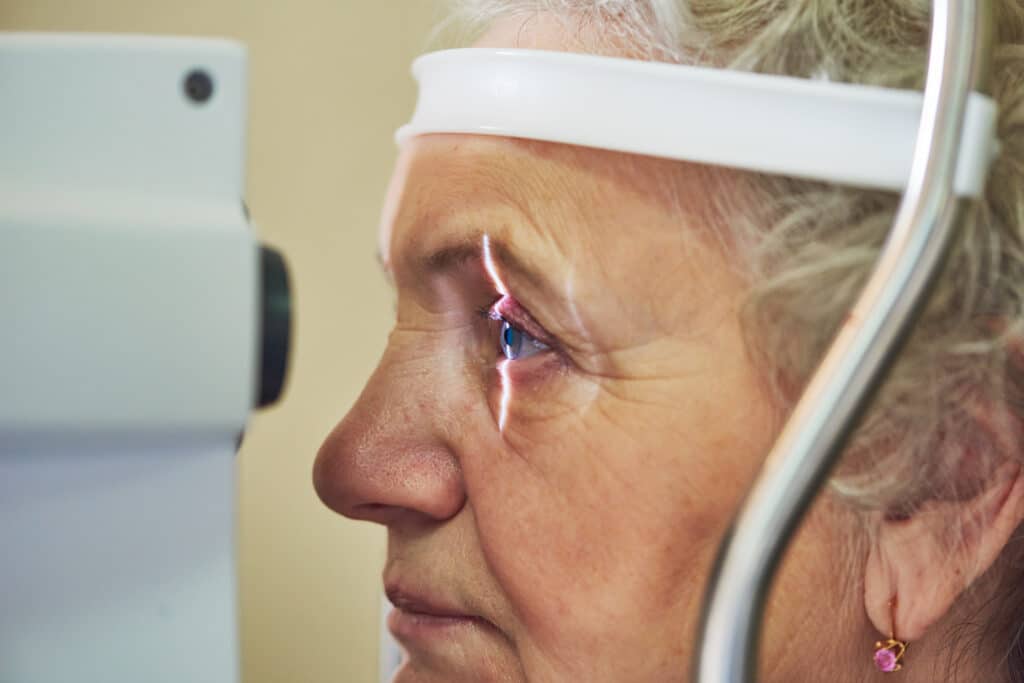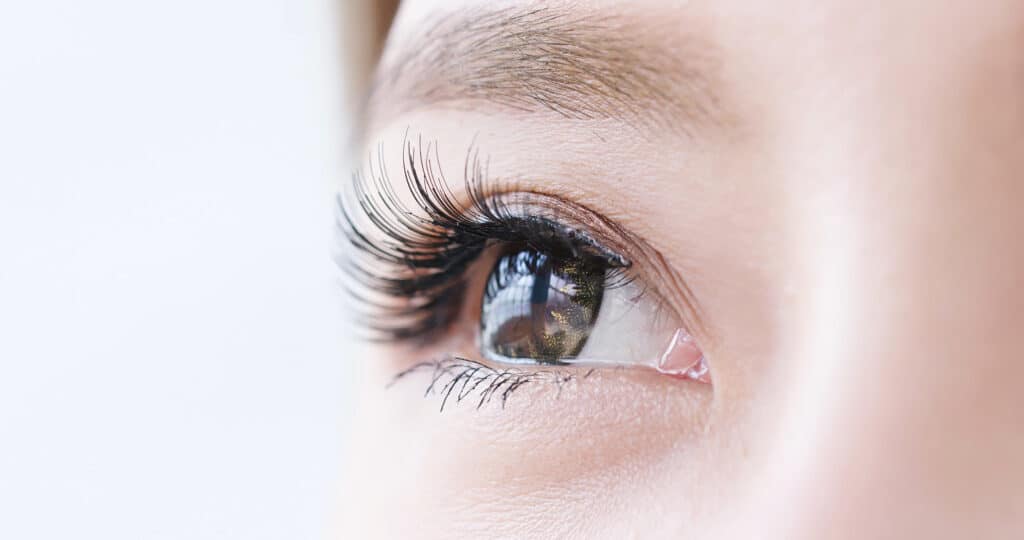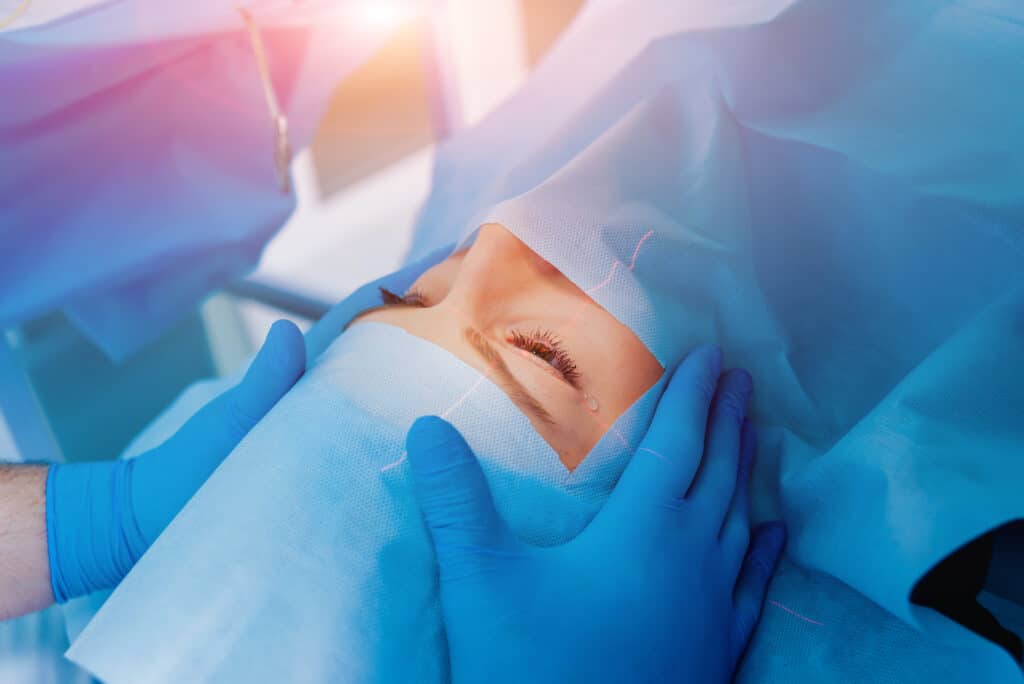Pterygium Causes, Symptoms, and Treatment
July 23, 2021
What is Pterygium?
A pterygium, also known as surfer’s eye, is a benign tissue growth on the cornea of the eye, pinkish and often triangular in appearance. A pterygium is typically present on the sun-exposed areas of the eye where the eyelids do not cover the eye or the sclera (the white part of the eye). They are usually found on the nasal aspect of the eye but can be located on the temporal side or both sides of the eye.
When present, it is not uncommon to have a pterygium on both eyes. While pterygium may slowly grow and cover more of the cornea, they rarely encroach upon the pupil enough to obscure vision.
The exact cause of pterygium is unknown, although there is evidence that shows it may be in part related to exposure to UV light, dust, wind, and dry conditions. Some theories suggest that UV damage to the stem cells present at the limbus (the area where the clear cornea and the white sclera join) allows the pterygium to form.
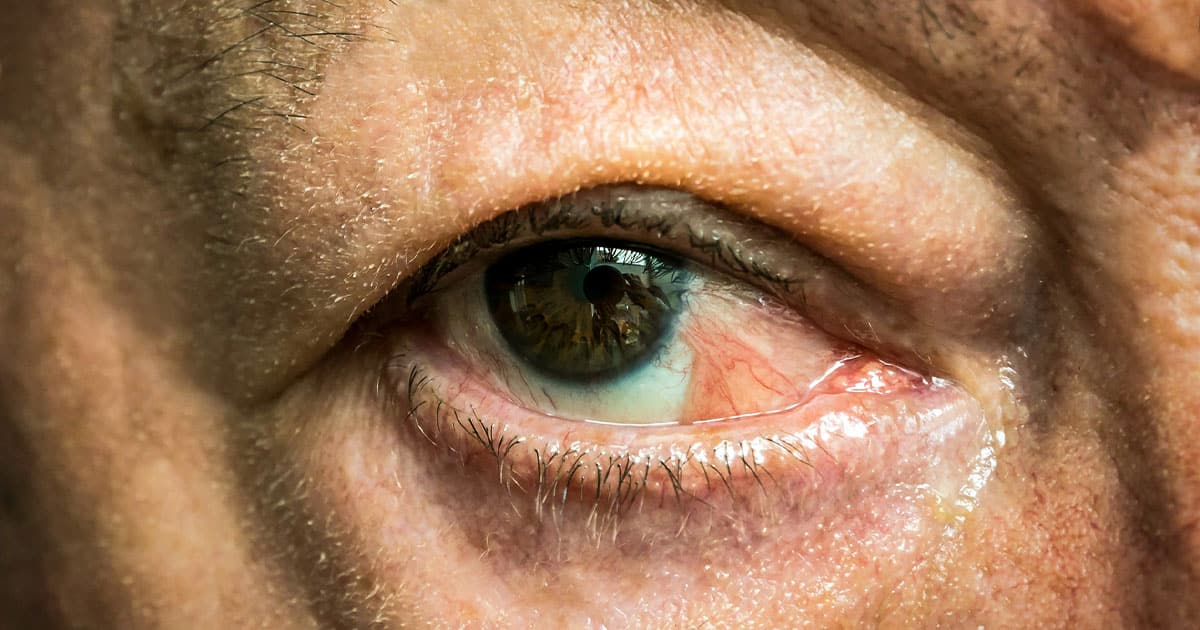
Symptoms of Pterygium
Pterygia occurs on the surface of the eye, originating from the conjunctiva before spreading to the cornea. A pterygium is a non-cancerous tissue growth that does not spread deeper than the surface of the eye.
They are frequently asymptomatic at first, with many patients complaining of issues related to cosmetic appearance rather than painful or irritating symptoms.
A pterygium usually needs to grow before symptoms arise. When symptoms are present, individuals may experience:
- Redness
- Eye dryness
- Itchiness
- Burning sensation
- Sensation of foreign object in eye
- Vision changes
While symptoms of pterygium are irritating, they are generally mild and only in advanced cases do symptoms become more severe. Vision may become impaired if a pterygium grows over the cornea and covers the pupil, blocking the eye’s line of vision or inducing an abnormal shape to the cornea called astigmatism. Astigmatism can be associated with double vision and is more associated with larger growths. The pterygium will make vision correction with contact lenses more difficult. Vision correction with glasses will still be an option for individuals with pterygium.
Pterygium do not always require treatment, and only in more serious cases is medical intervention or surgical removal recommended.
Talk to your eye doctor if you are experiencing any of these symptoms.
Pterygium Causes
It is unclear why pterygium occurs when it does. Causes are linked closely with exposure to UV light, wind, and dust, so they arise more frequently in individuals who live closer to the equator and who are constantly outside in sunlight. Windy environments have also been shown to exacerbate this effect.
Demographics play a role in pterygium frequency as well. Men are more likely to be impacted by a pterygium than women, with studies showing rates as high as 50% increased prevalence in men. Age is another known risk factor, and older individuals are far more likely to have a pterygium compared to their younger counterparts. Pterygium rarely occur in children.
Other factors that have been associated with pterygium are exposure to smoke, pollen, and other eye irritants. Individuals who work outdoors are much more likely to have pterygium due to increased exposure to ultraviolet (UV) radiation and intense sunlight. Correlations have also been found between chronic eye dryness and pterygium occurrence.
Avoid exposure to known irritants and wear proper protective gear when in sunny climates and spending time outdoors to minimize risk of pterygium occurence.
Pterygium Diagnosis
A pterygium can be diagnosed by clinical appearance and does not require specific testing, though your eye doctor may recommend further examinations if conditions worsen.
If symptoms are mild, as is often the case, your doctor may recommend a combination of over-the-counter and prescription medications as well as home remedies to reduce inflammation and eye irritation.
In more extreme presentations, pterygium may require testing such as corneal topography to assess the extent of the growth and impact on your eye health.
Surgical excision is only recommended in instances where pterygium obstruct vision and impact your ability to see properly. This procedure may result in corneal scarring where the pterygium is removed. Astigmatism induced by the pterigium is typically decreased after surgery. This can make glasses and contact lenses easier to prescribe.
Pterygium only rarely requires surgical intervention, and in general they typically do not cause serious symptoms or long-term side effects.
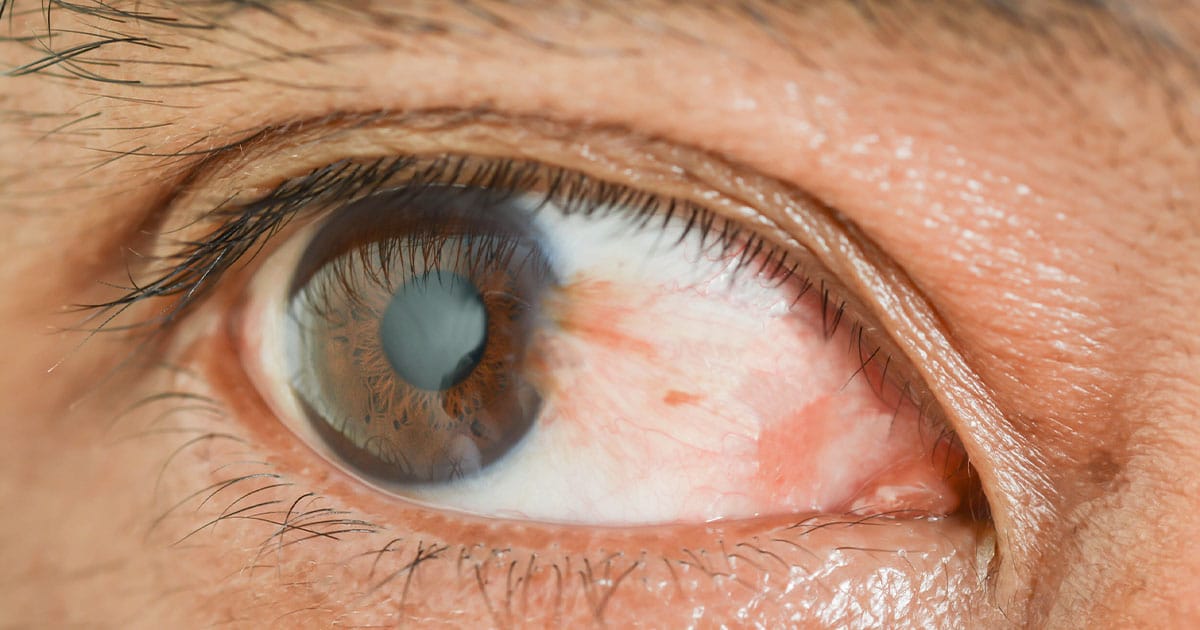
Treatments for Pterygium
As previously mentioned, surgery is only indicated in cases of pterygium where vision is impacted.
Most individuals with pterygium do not require any treatment at all except preventative measures and lubrication. If you are diagnosed with a pterygium, it is likely that your doctor will not recommend any additional treatment and will instead instruct you to monitor the growth and follow up if the pterygium causes redness and inflammation. Pterygium is typically monitored annually with photography and clinical examination. If the pterygium is stable and not progressing, observation is recommended.
In cases where treatment is required, symptomatic treatment is recommended. Symptoms like dry eyes, itchiness, and inflammation can be relieved through a variety of treatments, such as:
- Over-the-counter options like lubricating eye drops and ointments
- Prescription drugs such as steroid eye drops to decrease inflammation, swelling and redness
- At-home remedies, like warm compresses
- Solar protection like hats and sunglasses
The Path to Clearer Vision Starts Here
Pterygium Surgery
In cases where surgery is recommended, the surgeon and the patient will discuss the different options available to remove the pterygium and then reconstruct the ocular surface. Surgical techniques can vary depending on the size, the status of the remaining ocular tissue, availability of grafting tissue, intraoperative medical treatments, etc. Sometimes sutures are used temporarily to close tissue gaps and need removing after the surgery. Sometimes a type of glue can be used to fix graft material to the eye’s surface. Processed amniotic membrane is one type of graft material that is commonly used to help fill the tissue gaps left by the pterygium removal, promote healing and prevent recurrence of the pterygium. Conjunctiva, harvested from a healthier part of the eye surface, is another source for graft material.
Recovery from Pterygium Surgery
After pterygium surgery, patients typically return home with an eye patch that may be worn for 24 hours. The surgeon may check on the surgery the next day to make sure any grafts have not moved and there are no signs of infection. Patients are typically prescribed a combination of topical steroid and/or antibiotic medication to help with healing, prevent infection and decrease post surgical scarring. The medication is prescribed for 4-8 weeks in the majority of cases. During the recovery period, the patient will return for post operative check ups to make sure the healing is progressing and there are no signs of the pterygium recurring. Topical lubricant eye drops and/or ointments are also recommended during the healing period.
It is normal for the eye to feel scratchy and irritated in the early days after surgery. After 1-2 weeks, these symptoms get better as the surface of the eye heals and smooths out.
Recurrence
Pterygium may unfortunately recur despite surgical intervention and treatment, in as many as half of affected individuals. It is believed to be related to surgical trauma, postoperative inflammation, and UV exposure.
Radiotherapy traditionally used in cancer treatment has been used to reduce risk of recurrence. Another technique utilized following pterygium excision is auto-grafting, where a surgeon removes tissue from healthy conjunctiva and transplants it onto the affected conjunctiva, thereby lowering the risk of recurrence. Pterygium surgery is sometimes accompanied by the use of an anticancer medicine called mitomycin C. Mitomycin C with or without autografting can decrease the risk of recurrence.
Prevention
Preventative measures are recommended for those who have had pterygium in the past or for individuals living in areas with greater risk factors. These include environments that are particularly windy, sunny, or dusty.
It is recommended that individuals prevent exposure to intense sunlight by wearing UV protective sunglasses when outside – wraparound sunglasses provide the best protection.
